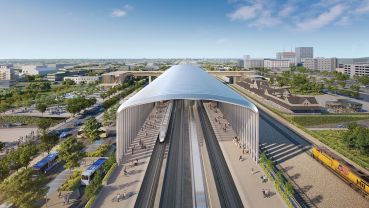New York’s Local Law 97: What to Know
By Tom Acitelli November 2, 2020 11:00 am
reprints
New City Council regulations require that most buildings 25,000 square feet or larger reduce their carbon emissions by 40 percent by 2030, and by 80 percent by 2050. This, in turn, is supposed to help the city itself reduce its overall emissions by similar levels.
These regulations are part of what’s called the 2019 Climate Mobilization Act’s “Local Law 97.” Expect to hear more about it in the coming years if you’re a building owner or part of an ownership team. Here’s what to know and where to find more information:
The city Department of Buildings is the enforcing agency, and is slated to begin enforcing the law in 2024.
Local Law 97 covers about 50,000 buildings and nearly 60 percent of the city’s building area, according to the Urban Green Council.
Building owners must use a city-created formula to convert the electricity used to power buildings into carbon emissions based on the energy grid mix.
Owners will then add other sources of energy they use, including natural gas burned on site for heating, and divide by their building’s area. That gives a per-square-foot measure of what’s generally called carbon intensity.
Then it becomes time for comparisons against compliance benchmarks. Owners will submit a compliance filing to the Buildings Department based on benchmark data that compares a building’s total emissions to its carbon limit, or cap.
The caps are based on building types, such as office or apartment.
Building owners must submit an emissions intensity report stamped by a registered design professional annually starting in 2025, according to CodeGreen Solutions.
The Buildings Department will work off of these reports to determine compliance.
Building owners that aren’t in compliance will be fined $268 per metric ton that their carbon footprint exceeds the limit annually.
Some building types, such as municipal hubs, affordable housing and houses of worship, will be allowed to hit alternative compliance benchmarks if they can’t comply with the general carbon intensity limits.
The entirety of Local Law 97 can be found here.
Many building owners and groups that represent them want the city to push back the date for starting to comply with Local Law 97. They cite the byzantine regulatory structure and benchmarking for determining compliance. They also cite the effects of the coronavirus pandemic, which has stressed building operations and could continue to do so well into 2021.
Finally, the closure of the nuclear power plant, Indian Point Energy Center, north of New York City in 2021 will mean that the city’s energy sources will be almost entirely fossil fuels. That condemns building owners to start from a deep hole to comply with a law that has staked its standards on renewable or carbon-neutral energy sources. Owners say that they and everyone else simply won’t know what New York City’s energy grid mix will look like in five or 10 years. How can they begin to comply now?
– With reporting by Chris Cameron


